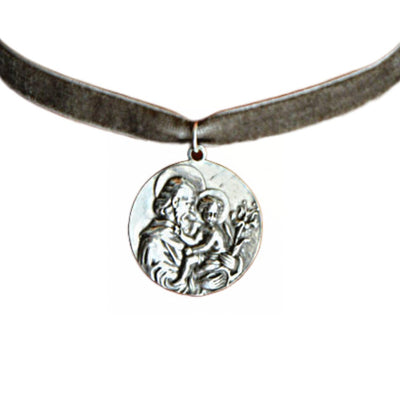Pope John Paul II: The Life, Legacy, and Sainthood of a Global Spiritual Leader
Pope John Paul II: The Life, Legacy, and Sainthood of a Global Spiritual Leader
Pope John Paul II, born Karol Józef Wojtyla on May 18, 1920, in Wadowice, Poland, was one of modern history's most influential religious leaders. As the first non-Italian pope in more than 400 years, his papacy left a lasting imprint on the Catholic Church and world politics, human rights, and the global pursuit of peace. His profound spiritual leadership and dedication to social justice earned him a legacy culminating in his sainthood in 2014. Let's explore Pope John Paul II's key moments, his role in shaping global events, and the miracles that led to his canonization.
Early Life and Loss
Karol Wojtyla's early years were marked by tragedy and perseverance. He was born into a deeply religious family, but at the tender age of nine, he lost his mother, and by twelve, his older brother Edmund also passed away. Despite these early challenges, Wojtyla's resilience and unwavering faith were truly admirable. He was an avid athlete who enjoyed skiing and swimming but also had a passion for the arts, particularly theater and poetry.
In 1938, Wojtyla enrolled at Jagiellonian University in Krakow, where he immersed himself in studies of literature and philosophy. However, World War II would soon disrupt his education as Nazi Germany invaded Poland. Wojtyla pursued his calling to the priesthood during this turbulent time by secretly studying at an underground seminary.
Rise Within the Catholic Church
After the war, Karol Wojtyla was ordained a priest in 1946 and earned a doctorate in theology in Rome. His intellectual prowess and commitment to the Church's teachings helped him rapidly rise through its ranks. By 1958, he was appointed the bishop of Ombi, and in 1964, he became the archbishop of Krakow.
Wojtyla was a key figure during the Second Vatican Council (1962-1965), which sought to modernize the Church and redefine its relationship with the contemporary world. His contributions to the council highlighted his deep commitment to exploring how the Church could stay relevant in a rapidly changing society.
1967, Pope Paul VI appointed him as a cardinal, marking a significant milestone in Wojtyla's ecclesiastical career. His leadership, intellectualism, and charisma made him a well-respected figure within the Church.
Becoming Pope: A Historic Papacy
On October 16, 1978, Karol Wojtyla was elected as Pope John Paul II, making history as the first non-Italian pope in over four centuries. His election came during a time of great political and social upheaval, and his leadership would be nothing short of transformative, both spiritually and politically.
John Paul II's papacy was characterized by his travels—he visited over 100 countries during his time as pope, spreading messages of faith, human dignity, and peace. His global outreach made him a beloved figure to millions of Catholics and non-Catholics alike. He played a crucial role in uplifting oppressed societies, particularly in Eastern Europe, where his influence contributed to the eventual downfall of communism in Poland.
Surviving an Assassination Attempt
In 1981, Pope John Paul II's life was nearly cut short in an assassination attempt. While greeting followers in St. Peter's Square, he was shot by a Turkish gunman named Mehmet Ali Ağca. Remarkably, the pope survived after multiple surgeries and later publicly forgave his attacker, embodying the Christian principles of forgiveness and reconciliation.
Advocate for Human Rights
John Paul II's unwavering stance on human rights and dignity defined much of his papacy. He frequently spoke out against human suffering, injustice, and inequality. One of his most notable achievements was his involvement in the peaceful resistance against communist regimes in Eastern Europe. His support for the Solidarity movement in Poland is widely regarded as a significant factor in the fall of communism in the region.
The pope was also a vocal opponent of capital punishment and war. His calls for peace and human solidarity resonated during global conflict and tension, making him a moral compass for many world leaders.
Health Decline and Passing
In the later years of his papacy, Pope John Paul II's health visibly deteriorated. In 2001, it was revealed that he had Parkinson's disease, a condition that affected his mobility and speech. Despite these physical limitations, he continued to serve as the head of the Catholic Church until his passing on April 2, 2005. Over 3 million people attended his funeral in Vatican City, reflecting the deep affection and reverence held for him worldwide.
The Miracles of Pope John Paul II
Two documented miracles attributed to his intercession cemented Pope John Paul II's path to sainthood. The first involved a French nun, Sister Marie Simon-Pierre, who was cured of Parkinson's disease after praying to the late pope. The second miracle occurred when a Costa Rican woman was healed from a brain aneurysm after praying to John Paul II.
These miraculous healings were vital in his canonization process, leading to his official declaration as a saint on April 27, 2014. The ceremony, presided over by Pope Francis, marked a historic moment as Pope John XXIII was also canonized on the same day.
Legacy
Pope John Paul II's legacy remains of faith, resilience, and an unwavering commitment to human dignity. His papacy was not without its challenges—he was a staunch conservative on many social issues, including contraception and same-sex marriage, which garnered both admiration and criticism. However, his compassion, leadership in human rights, and contributions to the fall of oppressive regimes have made him one of the most beloved and significant figures of the 20th century.
Conclusion
Pope John Paul II's life was a testament to the power of faith, perseverance, and global leadership. His journey from a small town in Poland to the Vatican's highest office is a story of profound spiritual influence and dedication to human rights. As a saint, his memory inspires millions worldwide, reminding us of the importance of love, peace, and solidarity in a world often divided by strife.
FAQs
Why is Pope John Paul II considered a saint?
- He was canonized after two miracles were attributed to him: the healing of a nun from Parkinson's disease and a woman's recovery from a brain aneurysm.
- He was a staunch advocate for human rights, speaking out against injustice, war, and capital punishment.
- His support for the Solidarity movement in Poland and his influence in Eastern Europe helped weaken communist regimes.
- He modernized the Church's global outreach, traveling extensively to promote peace, faith, and human dignity.
- Pope John Paul II passed away on April 2, 2005, after serving as pope for over 26 years.
For those seeking more detailed and authoritative information about Pope John Paul II, including official teachings, writings, and Vatican-approved resources, the Vatican's official website is a valuable resource. The site offers a wealth of information on papal documents, homilies, and speeches by Pope John Paul II. Additionally, the Congregation for the Causes of Saints provides insights into the canonization process and verified miracles attributed to the pope. Accessing these resources ensures a deeper understanding of his spiritual legacy and role in modern Church history.




















Leave a comment